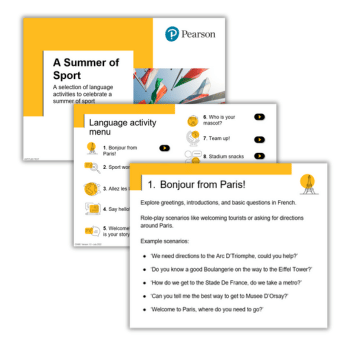EAL students – How to teach them (and what they can teach their peers)

Rebecca Leek explains how students with EAL can be taught well by ‘differentiating without differentiating’…

- by Rebecca Leek

Have you ever been in another country, trying to function as a learner in another language?
I experienced this in Italy in my early 20s, and found it both bewildering and exhilarating. You become someone slightly different – not the articulate, funny, or measured person you might be when speaking your home language, but a paler version of yourself.
I can only imagine how challenging this must be for students with English as an acquired language, who are trying to work out who they are, and learn in a language that’s unknown to them, all at the same time. But there are steps we can all take to help them.
Keywords as footholds
First, model a fascination with language. Whether you’re a science, art, PE or maths teacher, there will be all sorts of wonderful language passing through each of your lessons, – be it by virtue of the subject matter, or simply via interactions with your students. But how often do you stop to pay attention to an interesting phrase and break it open for the whole class?
For example, what does ‘per cent’ mean? This can open up discussion of currency, cricket and Latin prepositions all in one go, whilst also reinforcing an important mathematical concept. Linger on a keyword and your enthusiasm will rub off. Nurturing a culture of being exploratory with language will enable positive peer support to develop between English and non-English speakers.
As an early learner of a new language, one of the hardest things can be distinguishing between the start and end of words. Try to therefore slow down your delivery and clearly punctuate your speech, so that there’s a little more space between your words – especially when highlighting keywords.
See any keywords as the footholds to your lesson. If you’re teaching nutrition, for instance, then don’t rattle off a string of sentences at the start. Instead, provide a toolbox of vocabulary, working through the words slowly – ideally teaching them multi-modally (with pictures, reading, speaking and writing) before proceeding.
You may well find that many of your English speakers haven’t used the words ‘protein’, ‘carbohydrate’, ‘amino’, ‘macro’, et al. very often themselves, so it won’t do any harm to pick these words out until everyone is confident in their meaning and use. Have them be the leitmotif of the lesson by making sure you hear them resonate around the room. By letting them ring out, you’re providing your EAL learners with vital footholds, without which they may be completely lost.
Note the connections
If you teach a subject that lends itself to mind mapping, or if there are any opportunities for self-led exploratory work, let your students to take notes in their language of choice – hopefully they’ll have access to a dictionary (traditional or electronic). Whilst the ‘full immersion’ approach of learning English is proven to be very effective, you won’t be holding anyone back if, for 20 minutes or so, your learners gets to stretch themselves in their own language.
In any case, this means there’s valuable work to be done later, translating their notes into English. This will grant them access a higher level of vocabulary, and help them make connections between their language and English. Have them then share some of the words or phrases with the rest of the class. Note any similarities, and show their peers how valuable their bilingualism can be.
Finally, technology can be a great resource for support outside of your lessons. By regularly setting Google quizzes, or using platforms like Show My Homework, you can set up rapid tasks for pre-teaching or reinforcing key language from previous lessons. This could also be done more discreetly, by setting individualised tasks and giving private feedback, away from the gaze of the whole cohort.
Remember that your EAL learners are going to be better linguists than many of us. Celebrate what they’re doing and encourage their successes. Who knows – celebrating our polyglot students’ achievements might even inspire some of our monoglot teenagers to take up another language…
Rebecca Leek (@RebeccaLeek_) has been a secondary and primary classroom teacher, head of department, SENCo and headteacher; she is currently the CEO of SEAMAT – a trust of three schools in South Essex










